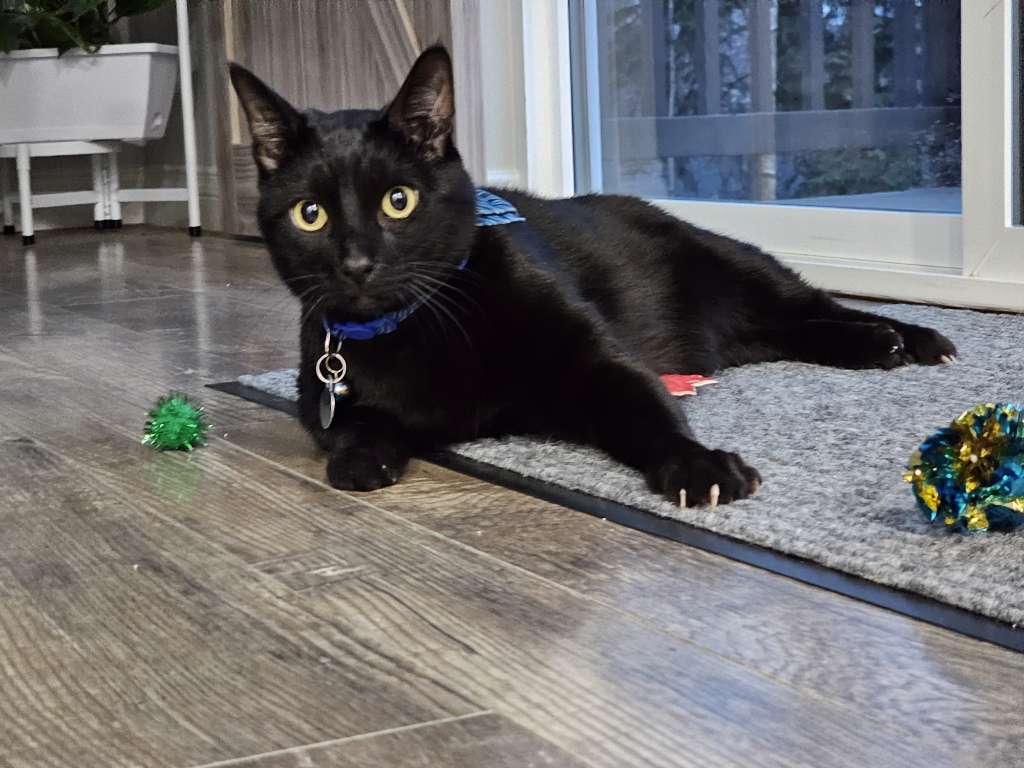Understanding Feline Affection: Insights for Cat Owners
Published May 4th, 2024



As a pet care service that values the unique communication of every pet, Hooman for Hire has delved into the world of one of the most enigmatic pets when it comes to expressing love: the cat. Unlike dogs, whose tail wags and exuberant licks make their emotions clear, cats convey affection in more subtle ways. This journey into understanding how cats demonstrate their love and trust is a joyous one, empowering cat owners to better comprehend and strengthen their bond with their feline companions.
Subtle Signs for Affection
Cats often express their affection in subtle ways that can go unnoticed by those not versed in cat behavior. Recognizing these signs can enhance the pet care experience and deepen the connection between cats and their families.
Slow Blinking: Known as ‘cat kisses,’ slow blinking is a cat’s way of showing comfort and affection. When a cat looks at you and blinks slowly, it’s a sign of trust, akin to saying ‘I love you’ in the feline language.
Head-butting: This behavior, in which a cat bumps its head against you, is not solely attention-seeking—it’s a way of marking you with its scent and claiming you as part of its trusted circle.
Purring: While cats also purr in non-positive contexts like pain, when combined with other content behaviors, purring is a clear indicator of happiness and comfort. A purring cat in your lap is enjoying your company and the security you provide. This behavior can also be a self-soothing mechanism for cats in stressful situations.
Showing Their Belly: When a cat shows its belly, it’s a sign of great trust. The belly is a vulnerable area, and exposing it is a cat’s way of saying it feels safe and secure around you.
Following You Around: If your cat follows you from room to room, it signifies affection. They want to be where you are, participating in your activities as much as possible.
Kneading: Cats knead, a behavior often characterized by the rhythmic pressing of paws against soft surfaces, as a comforting action rooted in kittenhood when kneading the mother’s belly stimulates milk flow. This behavior persists into adulthood as a sign of contentment and affection.
How to Respond to Cat Affections
Understanding is only the first step; responding appropriately can help strengthen the bond you share with your cat:
- Respect Their Space: Respecting a cat’s space is of utmost importance. Cats value their personal space and may only occasionally desire physical contact. By respecting their boundaries, you make them feel secure and show them the respect they deserve.
- Initiate Gentle Interactions: Respond to their slow blinks on your own, pet them when they head-butt you and engage with them when they follow you. These actions reinforce your mutual bond.
- Be Consistent: Cats thrive on routine. Consistent feeding times, playtime, and even cuddle times help them feel secure and loved.

At Hooman for Hire, we understand that every pet is unique. With their distinct expressions of affection, cats remind us that understanding and adapting to individual needs is crucial in pet care. Recognizing and responding to these signs of affection will improve the quality of care we provide and deepen the trusting relationship between pets and their families.
By fostering a deeper understanding of feline affections, we can ensure our feline clients are cared for and truly cherished. For more pet behavior and care insights, visit Hooman forHooman for Hire Hire’s website. We also offer personalized consultations to help you understand your cat’s behavior better and strengthen your bond with them. Don’t hesitate to reach out if you need further assistance.
Final Note
Love your cat in the way they understand and appreciate it best. We encourage you to share your experiences and tips on connecting with your cat across social channels, and let’s spread the word on nurturing feline friendships! Your insights can be valuable to other cat owners and can contribute to a better understanding of cat behavior.